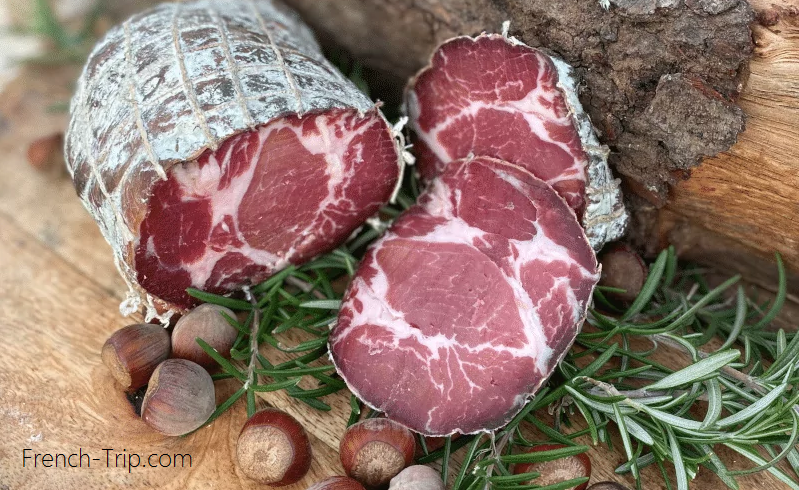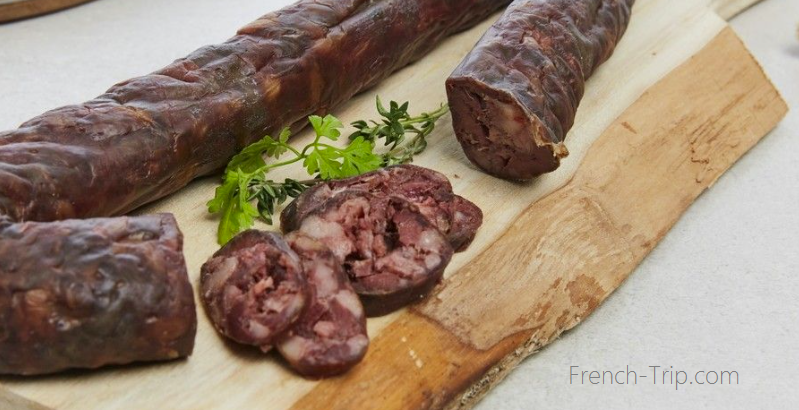Cosrican charcuterie

The world-renowned Corsican charcuterie is an art form perfected by generations of skilled craftsmen committed to the island’s culinary traditions. Made from free-range local pork raised in the mountainous regions of the island, these prized cold cuts are renowned for their genuine flavors and tender texture. With the AOP (protected designation of origin) certification, these products from dedicated breeders ensure top-notch quality, produced with care for the environment and animal welfare.
Centuries-Old Tradition of Cosrican Charcuterie
The native black pig (porcu nustrale) has been integral to Corsican life for thousands of years. During traditional rural times, these animals were kept by peasant families, feeding on organic leftovers. In late autumn and winter, the meat was salted, smoked, and cured by hanging it from the ceiling in front of the fireplace. These well-preserved cuts provided a ready supply of meat during the warmer months.
This tradition of pig rearing has been passed down through generations. Modern breeders allow their herds to free-roam forested mountain areas year-round, feeding on chestnuts, acorns, insects, and fruit. Travelers in the island’s interior are likely to encounter these ever-hungry pigs—so guard your lunch!

Lonzu
Corsican Cured Meats
Traditional Corsican charcuterie are renowned for their unique characteristics and aromas. Over centuries, artisans have perfected meat-preserving methods, turning good products into delicious masterpieces. Rich in proteins, zinc, phosphorus, iron, and vitamin B, Corsican pork remains an indispensable part of the island’s culinary tradition, celebrated for its freshness, simplicity, and the quality of local ingredients.
Cosrican charcuterie:
Coppa: A traditional Corsican cold cut made from pork loin, characterized by a deep red color and complex aromas with swirls of fat (at the top of the page). The meat is salted, spiced, smoked, and matured for at least 5 months. Coppa can be served with mozzarella, fresh figs, in salads, on pizzas, or paired with parmesan, basil, and green asparagus. Store in a well-ventilated, cool place.
Lonzu: A salted tenderloin with fresh, supple aromas, sweet nutty flavors, and a dry, firm texture edged with a thin coating of fat. Lonzu can be served as an appetizer, mixed in pasta dishes, chopped in an omelet, or paired with Corsican tome cheese.
Prisuttu: Corsican cured ham salted with sea salt, with no added preservatives, matured for at least 12 months. It has a delicate scent, deep red flesh, and balanced nutty flavors. Prisuttu is best enjoyed alone or as an aperitif with figs or pickles, and can also be used in traditional stews or sauces. Pairs well with a refreshing Corsican rosé on hot summer days.
Figatellu: A fresh U-shaped sausage made of liver and minced pork meat, spiced with garlic and red wine. Dried and smoked in hardwood, figatellu boasts strong flavors and a dark, often black color. Intended for rapid consumption within 20 days, figatellu is traditionally barbecued but can also be pan-fried, baked, or braised with lentils. Often served with Corsican pulenda or brocciu cheese. Avoid eating it raw or undercooked. Pairs well with a robust Patrimonio red.

Figatellu
Related links:
- Corsican cuisine
- Corsican traditional dishes
- Corsican cheeses
- Cosrican charcuterie
- Corsican wines
- French cuisine
- French cheeses
Archives
Calendar
| M | T | W | T | F | S | S |
|---|---|---|---|---|---|---|
| 1 | 2 | 3 | 4 | 5 | 6 | 7 |
| 8 | 9 | 10 | 11 | 12 | 13 | 14 |
| 15 | 16 | 17 | 18 | 19 | 20 | 21 |
| 22 | 23 | 24 | 25 | 26 | 27 | 28 |
| 29 | 30 | 31 | ||||